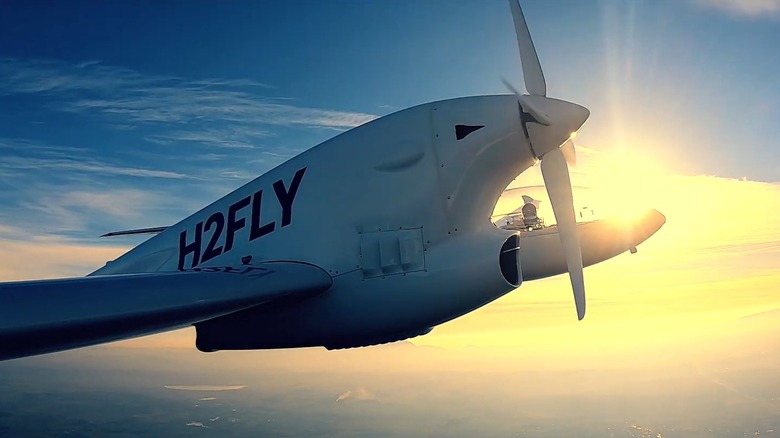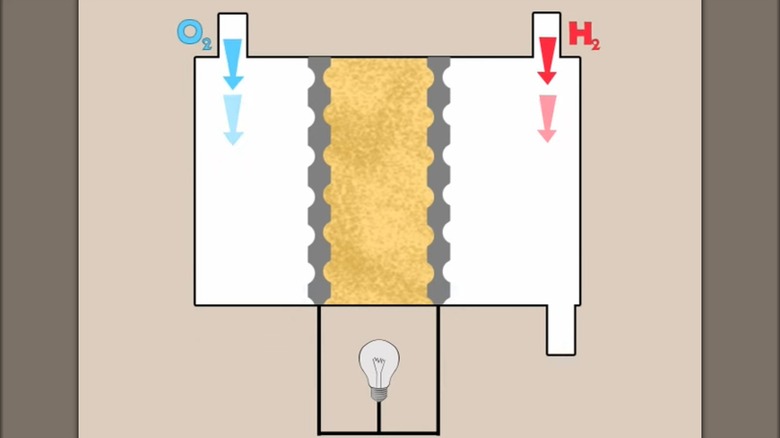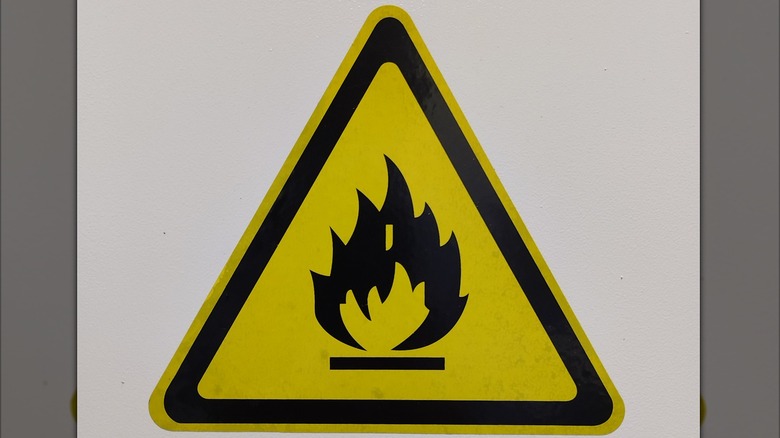Cummins Is Making An Airplane Engine — But No, It's Not A Diesel
Cummins, a leading U.S. corporation that has since expanded operations into several other countries, has been around for more than a century, and is known for its robust diesel engines. However, while its diesel products continue to remain high profile, many may be unaware of the company's technology division, which has been hard at work innovating with sustainable power alternatives.
One recent achievement is the Cummins fuel cell engine in the HY4; the first hydrogen-powered aircraft. Using hydrogen, the HY4 utilizes an electric powertrain allowing it to take flight with the only byproduct being water, meaning it effectively releases zero emissions during operation. This aircraft isn't large, only allowing for four passengers, but it's a proof of concept, demonstrating the feasibility of alternative fuel after 30 multi-hour flight tests. Cummins isn't alone in its quest for eco-friendly aircraft using hydrogen; this wingless concept jet could traverse over the Atlantic at 1,120 MPH using the same.
How do fuel cells convert hydrogen into electricity and where do we get hydrogen?
If you're wondering how Cummins' hydrogen airplane engine works, it involves a series of processes. In basic terms, a fuel cell allows hydrogen and oxygen to combine, which facilitates an electrochemical process. Instead of combustion, which is used in gasoline and diesel engines to create energy, a hydrogen fuel cell makes three products: heat, electricity, and water. On a more detailed level, a fuel cell utilizes an anode, a membrane, a cathode, and a circuit to create electricity. Hydrogen's atoms have their electrons extracted in the anode, positive protons cross over the membrane into the cathode, then negative electrons enter a circuit, making energy.
Hydrogen can be made from a variety of sources, such as animal and plant waste, as well as natural gas. There are several methods of creating hydrogen, but the U.S. Department of Energy states that around 95% is made using a thermal process. Gases produced from things like biomass go through a process called steam reforming, which, through intense heat, converts hydrocarbon fuel into hydrogen. Nearly two years after the Cummins breakthrough, another hydrogen-powered plane made a record-setting first flight, bringing this alternative fuel closer to a modern reality.
Are there dangers in using hydrogen fuel cells?
Hydrogen-powered airplane engines aren't without their downsides, however. There are a few notable hazards surrounding hydrogen fuel cells, such as the risk of electric shock. For example, some vehicles powered by fuel cells are operating with more than 350 volts of current running through them. A shock of just 49 volts has caused humans to cease breathing, so you can imagine what more than seven times that amount could do.
It isn't just electrocution that poses a threat, but also the highly flammable nature of hydrogen fuel cells, where even less is needed to cause combustion than gasoline. The flammable range of hydrogen is between 4 and 75% in air, compared to regular gasoline at 7.6%. Of course, the classic tragedy of the hydrogen-filled Hindenburg isn't doing the alternative fuel any favors. Although, airships might make a comeback, but here's why you may not want to fly on one.
To make matters worse, because hydrogen weighs dramatically less than gasoline fumes and air, it rises remarkably fast in the event of a leak. In a closed environment, this could create an increasing intensity of highly combustible material, making safe storage of this alternative fuel a high priority. Regardless, the Cummins' hydrogen fuel cell engine could prove beneficial in looking toward non-diesel fuels.


